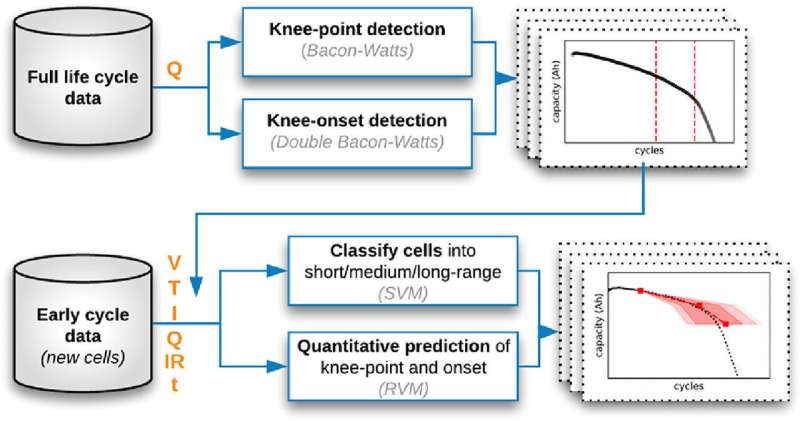Machine learning technique improves analysis and prediction of lithium-ion battery life

A machine learning technique to improve analysis and prediction of lithium-ion battery life has been developed by researchers in Scotland. Gonçalo dos Reis and colleagues at the University of Edinburgh and Heriot-Watt University, Edinburgh, U.K., report the development and application of their procedure in an article in the open access journal Energy and AI. The ability to predict the course of a battery's decline early in its life cycle could improve battery management, testing and design.
Lithium-ion batteries are the most common power sources for a variety of personal electronic devices including cell phones and laptops. Their electrical capacity degrades over time, but not in a linear manner. Instead, after a lengthy period of slow and almost linear decline, capacity tends to begin to fall in an ever-increasing, non-linear deterioration. When plotted as a graph of capacity against usage cycles, the most obvious bend in the curve of decline is called the knee-point.
The Edinburgh team have defined a procedure to predict the degradation curve and knee-point at an early stage, without having to monitor the fall in capacity over the full life cycle. This could assist in the development of new batteries and in monitoring the health of a battery.
A key aspect of the new method is the identification of an earlier point in the capacity curve, which the researchers call the knee-onset point. This is a newly identified initial stage of decline towards the knee-point. The researchers' algorithm, developed using machine learning, can use the knee-onset point to predict the knee-point and also the end of effective battery life. The algorithm allows each of these features to identify the timing of the others.
Better battery management, assisted by this new method, could include prioritizing and optimizing the energy available to key applications and optimizing recharging cycles.
More information: Paula Fermín-Cueto et al, Identification and machine learning prediction of knee-point and knee-onset in capacity degradation curves of lithium-ion cells, Energy and AI (2020). DOI: 10.1016/j.egyai.2020.100006















